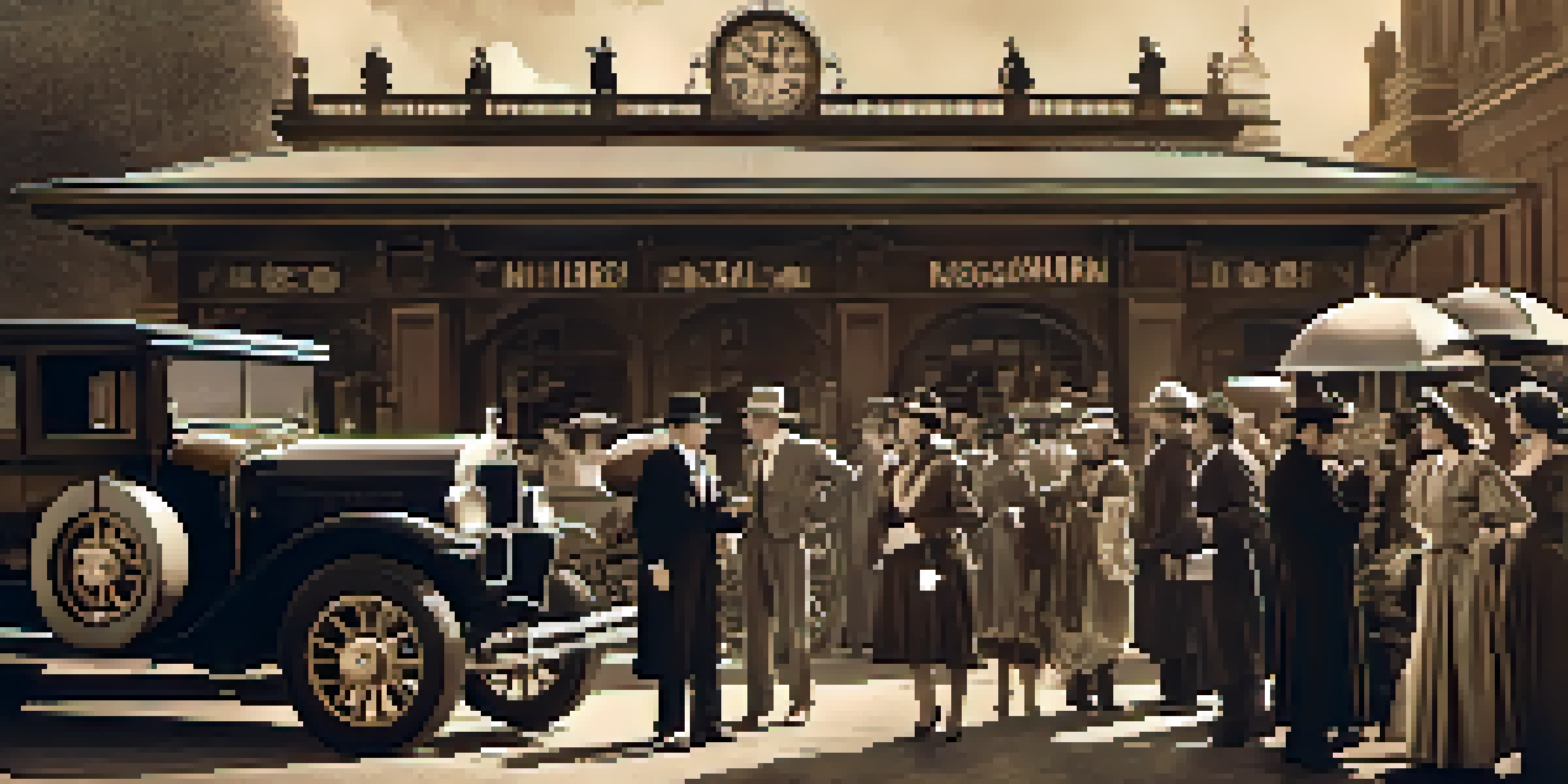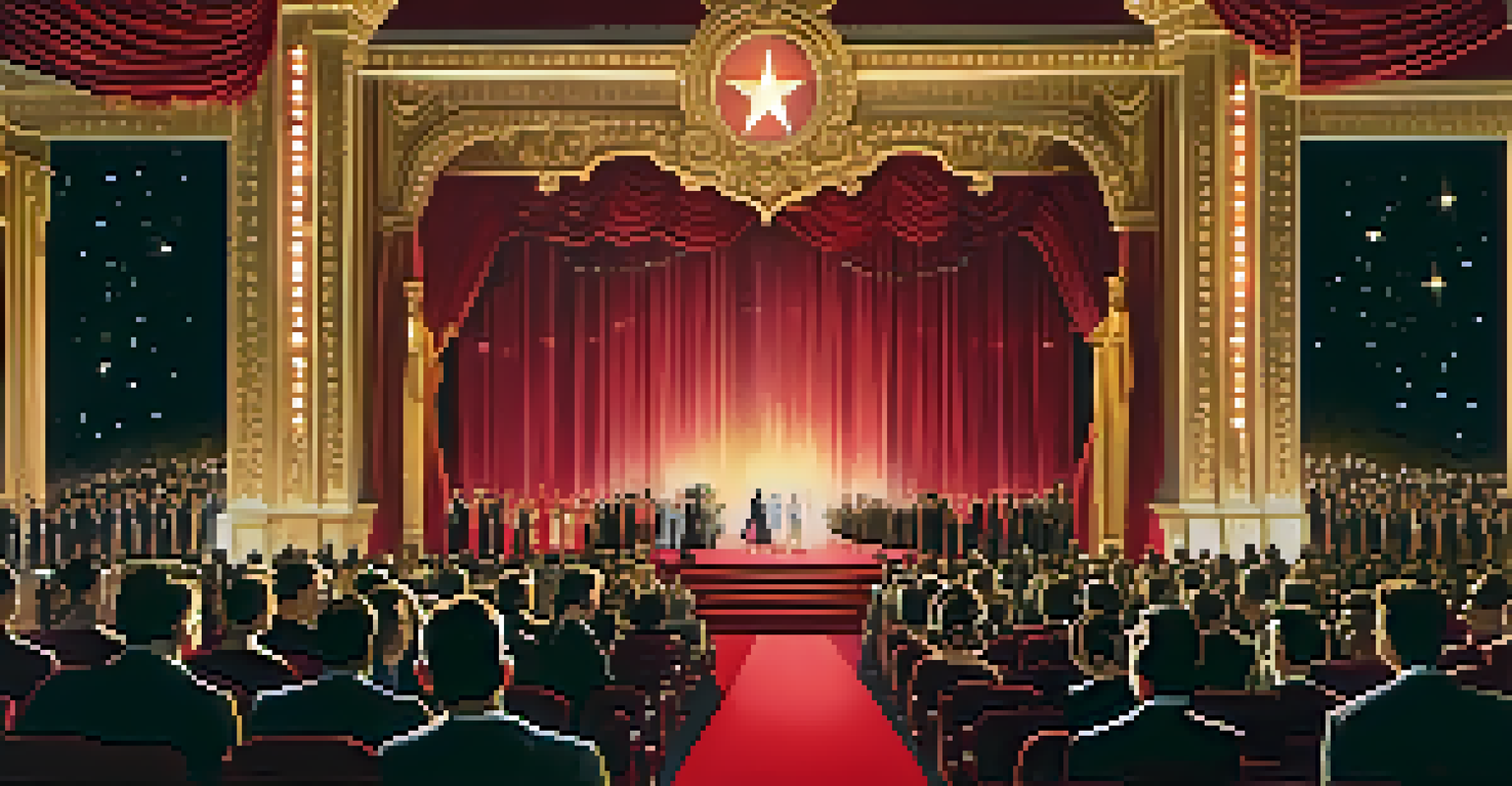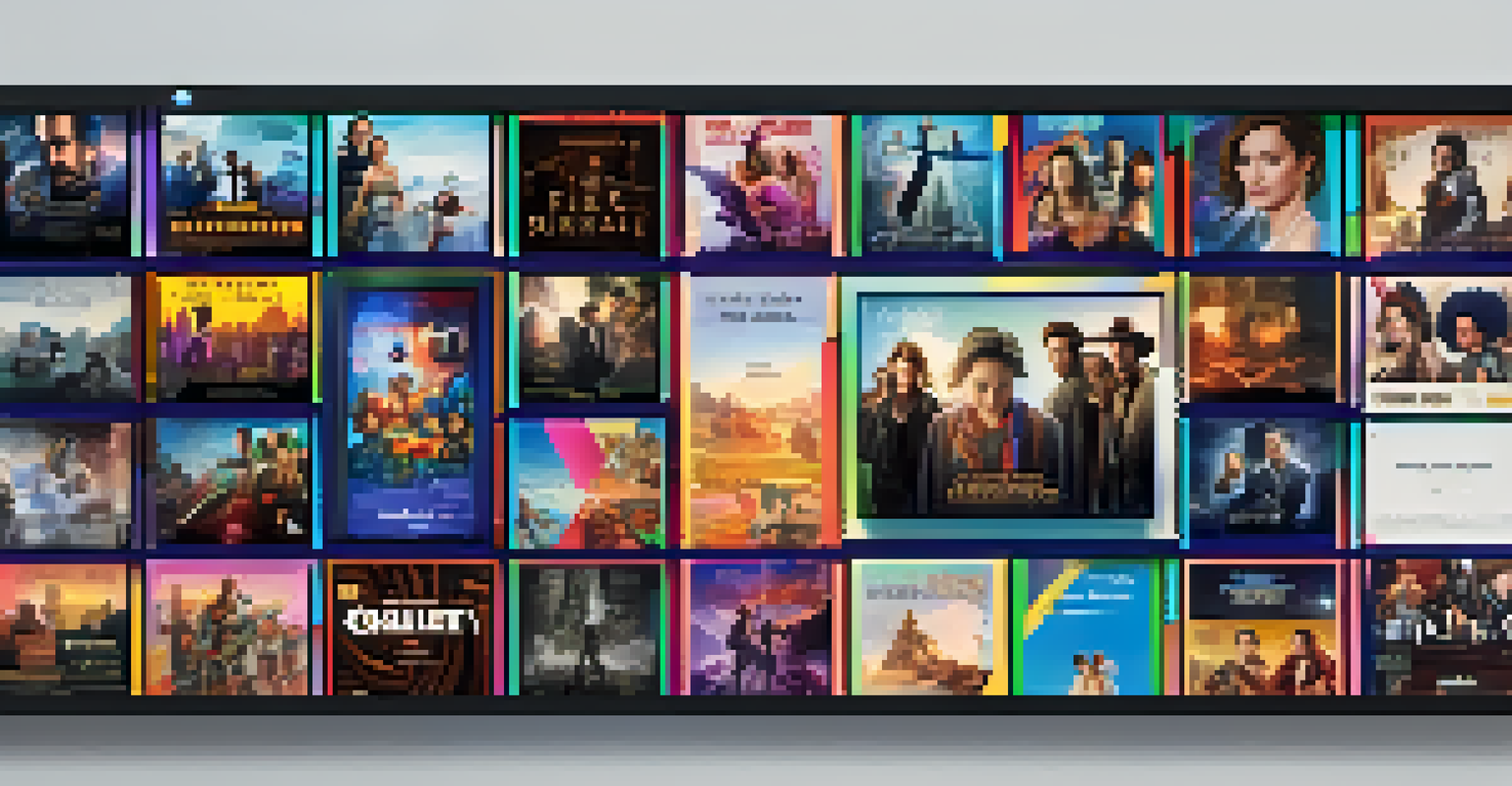The Evolution of Screen Adaptations in Modern Hollywood Films

The Early Days of Adaptation: From Page to Screen
The journey of screen adaptations began in the silent film era, where classic literature was transformed into visual storytelling. Early filmmakers faced the challenge of conveying complex narratives without dialogue, relying heavily on visuals and intertitles. Iconic works like 'The Great Train Robbery' showcased how even simple stories could capture audiences' imaginations, setting a foundation for future adaptations.
There is no greater agony than bearing an untold story inside you.
As technology advanced, the introduction of sound and color broadened the horizons for filmmakers. They began to embrace more intricate plots, adapting works like F. Scott Fitzgerald's 'The Great Gatsby' into vibrant films that could convey the novel's rich themes. This era marked the beginning of a trend where adaptations strived to remain faithful to their source material while exploring new creative avenues.
These early adaptations laid the groundwork for a Hollywood culture that increasingly turned to literature for inspiration. The successes and failures of these films taught studios valuable lessons about audience expectations and the importance of fidelity to the original work. This understanding would continue to shape the adaptation landscape for decades to come.
The Golden Age: Classic Literature Meets Hollywood Glamour
The Golden Age of Hollywood (1930s-1960s) brought a wave of adaptations that captivated audiences, often featuring star-studded casts and lavish production values. Films like 'Gone with the Wind' and 'Casablanca' not only paid homage to their literary roots but also became cultural landmarks in their own right. This period showcased how adaptations could elevate a story through enhanced visuals and performances.

During this time, studios understood that adaptations could attract moviegoers familiar with the source material. The blending of classic literature and cinematic flair created a unique synergy, allowing filmmakers to reinterpret beloved stories for modern audiences. Adaptations were no longer just translations of text; they became an art form that could evoke emotion and provoke thought.
Evolution of Adaptations in Hollywood
Screen adaptations have transformed from silent films to diverse narratives, reflecting changes in technology and audience expectations.
However, this era also highlighted the tension between fidelity and creativity. While some filmmakers chose to remain faithful to the original works, others took liberties with plots and characters, sparking discussions about the balance between adaptation and originality. This ongoing dialogue would shape the future of adaptation in significant ways.
The Rise of the Blockbuster: Adaptations Take Center Stage
The late 20th century saw the emergence of the blockbuster, with adaptations becoming box office gold. Films like 'Jurassic Park' and 'Harry Potter' not only captured the imaginations of viewers but also set new standards for cinematic storytelling. These adaptations showcased the potential of high-budget productions to bring intricate worlds to life, drawing in audiences from all walks of life.
Adapting a book is like translating a language; the essence can be lost in the process.
As franchises began to dominate the landscape, studios recognized the value of familiar stories that could guarantee audience interest. The success of these adaptations often hinged on their ability to resonate with both fans of the original material and new viewers alike. This dual appeal became a blueprint for future adaptations, leading to a surge in sequels and spin-offs that expanded beloved universes.
However, this era also sparked debates about the creativity of Hollywood. Critics argued that the reliance on adaptations stifled original storytelling, leading to a homogenized film landscape. Despite the concerns, the blockbuster era solidified adaptations as a primary strategy for studios, driving trends that continue to influence Hollywood today.
Diverse Narratives: Expanding Beyond Classic Literature
As Hollywood evolved, so did its approach to adaptations. The early 21st century saw a shift toward diverse narratives, with filmmakers adapting stories that reflected a broader range of experiences. This included works from authors of various backgrounds, such as Chimamanda Ngozi Adichie's 'Americanah' and Khaled Hosseini's 'The Kite Runner', which brought fresh perspectives to the screen.
This shift not only enriched the adaptation landscape but also resonated with audiences seeking representation in storytelling. By embracing a wider array of voices and genres, filmmakers were able to create adaptations that felt relevant and relatable. This evolution marked a departure from the traditional canon of Western literature, inviting viewers to engage with stories that reflected their own lives.
The Impact of Streaming Platforms
Streaming services have revolutionized adaptations, allowing for deeper storytelling and greater access to diverse narratives.
Moreover, this trend encouraged filmmakers to experiment with form and genre. Adaptations of graphic novels, video games, and even podcasts began to emerge, showcasing the versatility of storytelling in the modern age. This openness to diverse narratives has not only expanded the scope of adaptations but has also fostered a more inclusive cinematic landscape.
The Role of Streaming: A New Era for Adaptations
The rise of streaming platforms has transformed the landscape of screen adaptations, offering new opportunities for storytelling. Services like Netflix and Hulu have embraced adaptations, producing high-quality series based on novels, comics, and even video games. This shift allows for deeper exploration of complex narratives, often providing more screen time than traditional films.
With streaming, adaptations can cater to niche audiences, resulting in a diverse array of projects that might not have found a place in theaters. For example, series like 'The Queen's Gambit' and 'Bridgerton' have not only garnered critical acclaim but have also sparked renewed interest in their source material. This accessibility has redefined how audiences engage with adaptations, allowing for a more interactive experience.
Furthermore, the episodic format often allows for character development and plot intricacies that films may struggle to capture within a limited runtime. This evolution has encouraged filmmakers to think creatively about how to adapt stories, leading to innovative interpretations that resonate with viewers. The streaming era has truly opened the door for a new wave of adaptations that celebrate the richness of storytelling.
Challenges and Criticisms: The Adaptation Dilemma
Despite the successes of screen adaptations, they are not without challenges and criticisms. Fans of the original works often have high expectations, leading to scrutiny over casting choices, plot changes, and character portrayals. This scrutiny has sparked heated debates about fidelity to the source material and the creative liberties taken by filmmakers.
Moreover, the pressure to deliver a blockbuster hit can sometimes overshadow the essence of the original story. In an attempt to appeal to broader audiences, some adaptations may dilute the themes and messages that made the original work impactful. This balancing act between commercial success and artistic integrity remains a central dilemma for filmmakers.
Balancing Fidelity and Creativity
Filmmakers face the ongoing challenge of maintaining fidelity to original works while also exploring creative liberties in adaptations.
As the adaptation landscape continues to evolve, filmmakers must navigate these challenges while staying true to the heart of the stories they are telling. Engaging with audiences through social media and other platforms has become crucial, as it allows creators to understand viewer expectations and foster discussions about the adaptation process. This dialogue can help bridge the gap between original fans and new audiences.
The Future of Adaptations: Trends to Watch
Looking ahead, the future of screen adaptations in Hollywood seems promising and dynamic. As technology continues to advance, filmmakers have the tools to create even more immersive experiences, blending animation, live-action, and virtual reality. This evolution will likely lead to new forms of adaptations that challenge traditional storytelling methods.
Additionally, the demand for diverse narratives is expected to grow, pushing studios to explore untapped literary works and voices from around the world. This trend could lead to a richer tapestry of stories that reflect the complexities of our global society. As audiences become more engaged and vocal, filmmakers will need to remain attuned to their preferences and desires.

Finally, the ongoing success of adaptations will likely inspire a renewed focus on original storytelling as well. The lessons learned from adapting existing works can inform new narratives, leading to innovative films that push the boundaries of creativity. The future of screen adaptations in Hollywood is not just about reinterpreting the past; it's about shaping the storytelling landscape for generations to come.